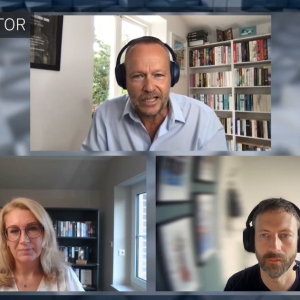The SplendidCRM software is derived, under license, from the SugarCRM open source application in that it uses the SugarCRM images, icons and style sheets and some of its HTML and Java code at the front end of the application.
However, where SugarCRM is built on and for the Lamp stack while also being able to run with Windows, SplendidCRM has rewritten the back end using Microsoft tools, to run on Microsoft technology – Windows, IIS, SQL Server, C# and ASP.NET. Although it can support other databases, the company makes no bones about it being designed for a Microsoft environment.
SplendidCRM makes the application available open source style, as a free download but also provides a paid for Professional version which includes the SQL Server source code (or the necessary source code for the other supported databases) essential for integrating SplendidCRM with other applications.
Aimed primarily at systems integrators as a platform on which to develop CRM and other business application extensions SplendidCRM offers SI’s a choice of free runtime or free hosting licenses and is pitching it as being a much cheaper alternative to SugarCRM.
The Microsoft-bias stems from the SplendidCRM teams’ Microsoft expertise. According to president Paul Rony, SplendidCRM looked at and liked SugarCRM, but being a Microsoft house, decided they could do better job by using Microsoft tools while utilizing the SugarCRM look and feel.
We were able to leverage their work, we were able to cut out a lot of effort, to create a new and better product, said Rony. The bias is also down to the belief that many Microsoft-centric organizations will be unhappy working with PHP or lack the in house skills, and a feeling that Java failed to deliver on its write once/run anywhere promise.
The start-up opened for business in 2005 but has only really been pushing its wares this year and has just released version 1.4 of its CRM platform. It is putting itself up against some stiff competition, including Microsoft, Salesforce.com and SugarCRM, while simultaneously working with Microsoft and SugarCRM, which begs the question why.
The key is developing with Microsoft technology, said Rony, it allows us to accommodate the same goals [as SugarCRM] but with fewer developers and fewer resources. Microsoft had the best development tools, encouraging developers to adopt the platform. We looked at SugarCRM and thought we could do the same or something faster with one tenth of the resources. That was a compelling reason to create a competing product.
As far as Microsoft is concerned, Rony said SplendidCRM had used Microsoft Dynamics CRM and hated it.
Microsoft CRM is a huge project and a huge product. You need two to three servers to run it, it is difficult to install and we could not get the reporting system to work. It is not an ideal platform for a small business. It is fine for companies with 1000+ users but not companies with 10 to less than 100 users, he said.
SplendidCRM decided that if it, as a Microsoft expert, could not get on with Microsoft CRM then the average in-house IT staff would stand even less of a chance, and from that the idea of SplendidCRM was born – cheaper and easier to implement and maintain yet still based on the technology and environment many IT departments and users are skilled in, according to SplendidCRM.
Although the company name brands itself as a CRM company, the offering is more of a extensible platform than a CRM application and Rony said the CRM tag was chosen as a means of gaining visibility and driving volume sales. However, he does believe that business process management is coalescing around front office applications and that there is more to CRM than we see today, a sentiment that both SugarCRM and Salesforce.com both agree with.
Our View
Players like SplendidCRM, SugarCRM and Salesforce.com are redefining the concept of the CRM application, moving away from the idea that a CRM application is a defined and exposed set of functionality and processes.
However, they are going even further as their ultimate goal is not to operate as CRM vendors but as platform providers, providing an environment for the development and deployment of broad based business functionality. CRM is a hook to drive necessary volume and help demonstrate what the platform can be used for. The problem is that each platform needs a large ecosystem to be successful and there is a growing number of platform providers trying to attract a following from the same pool of customers, developers and SI’s.






